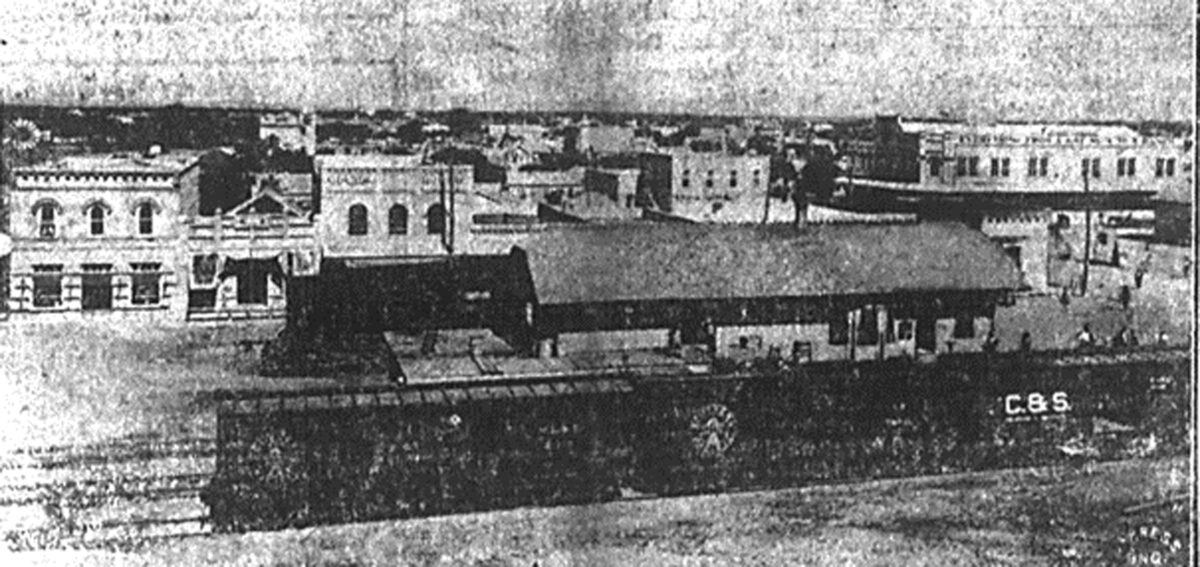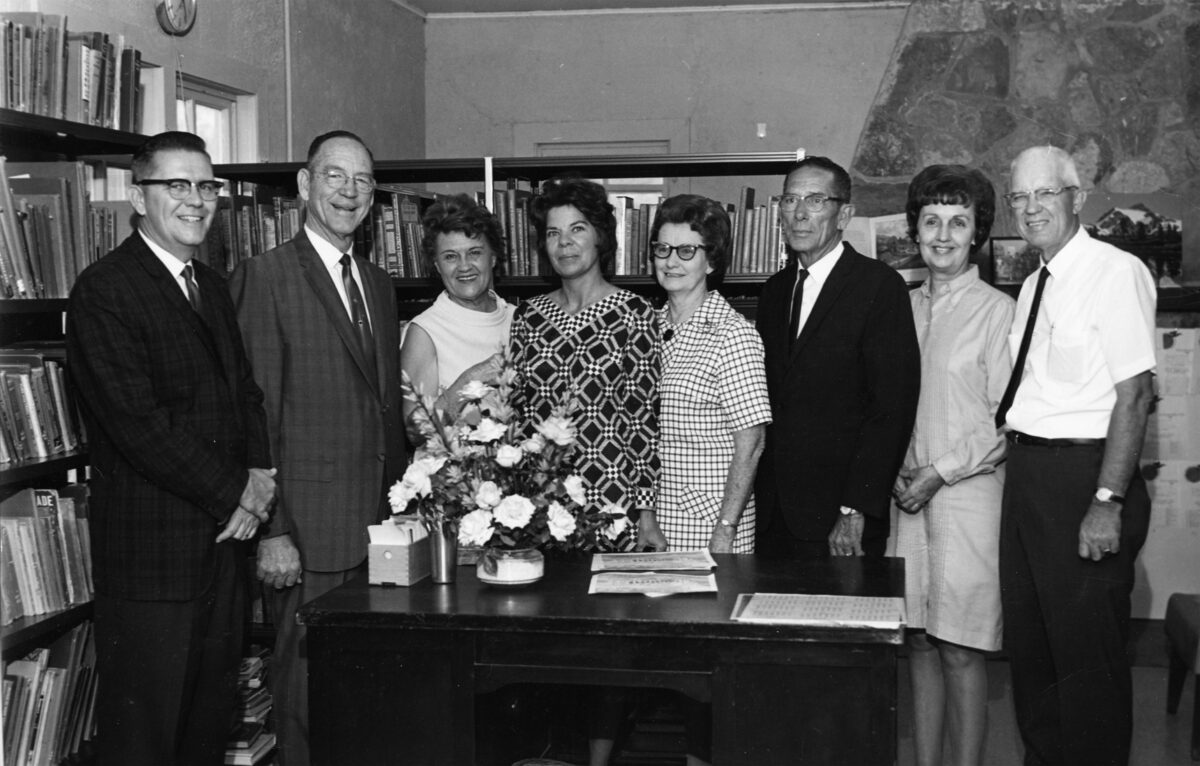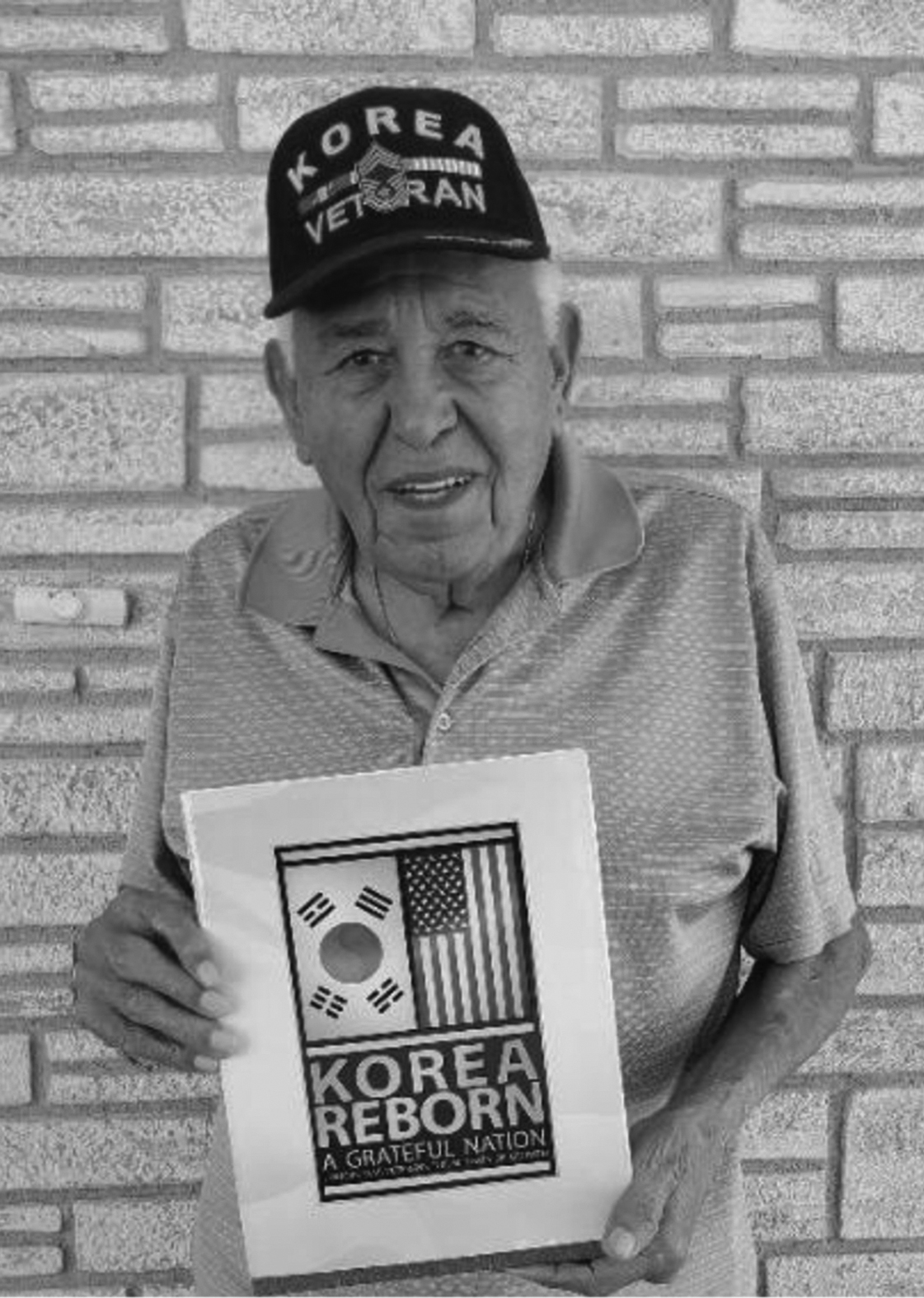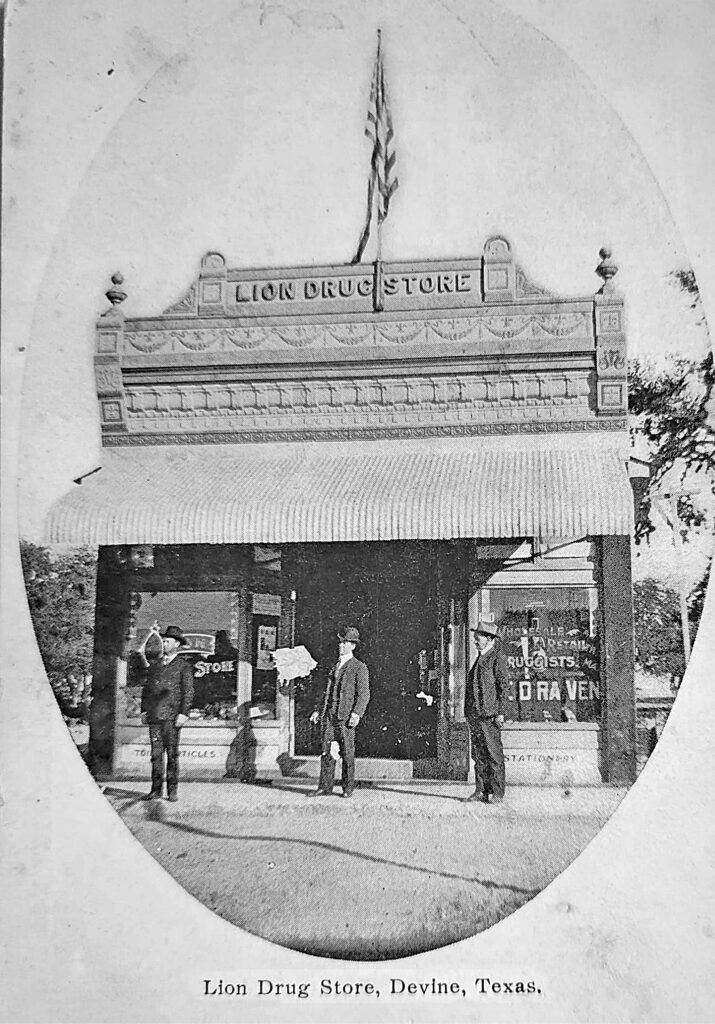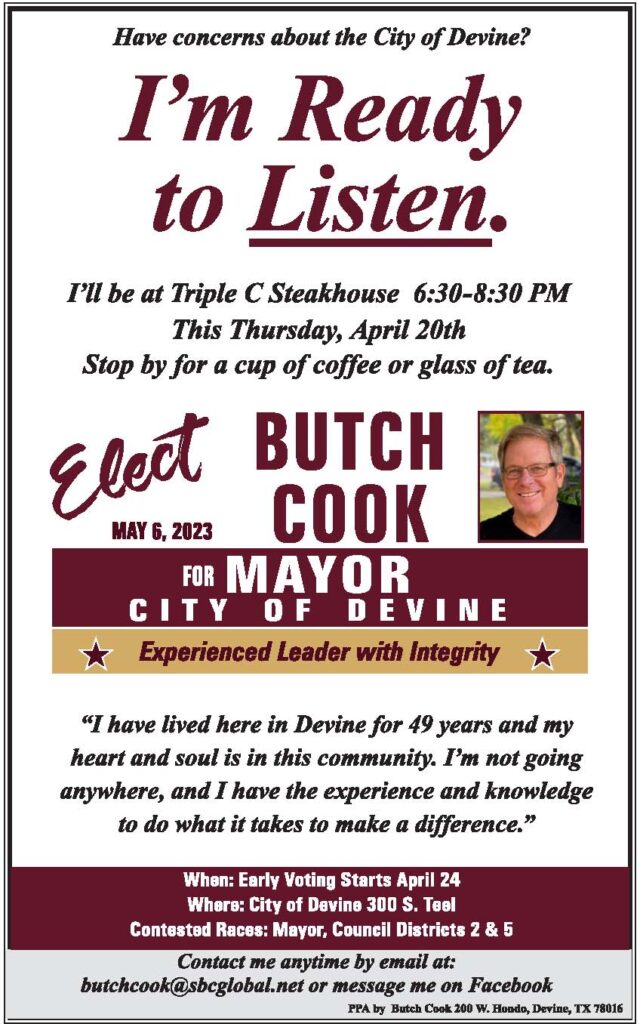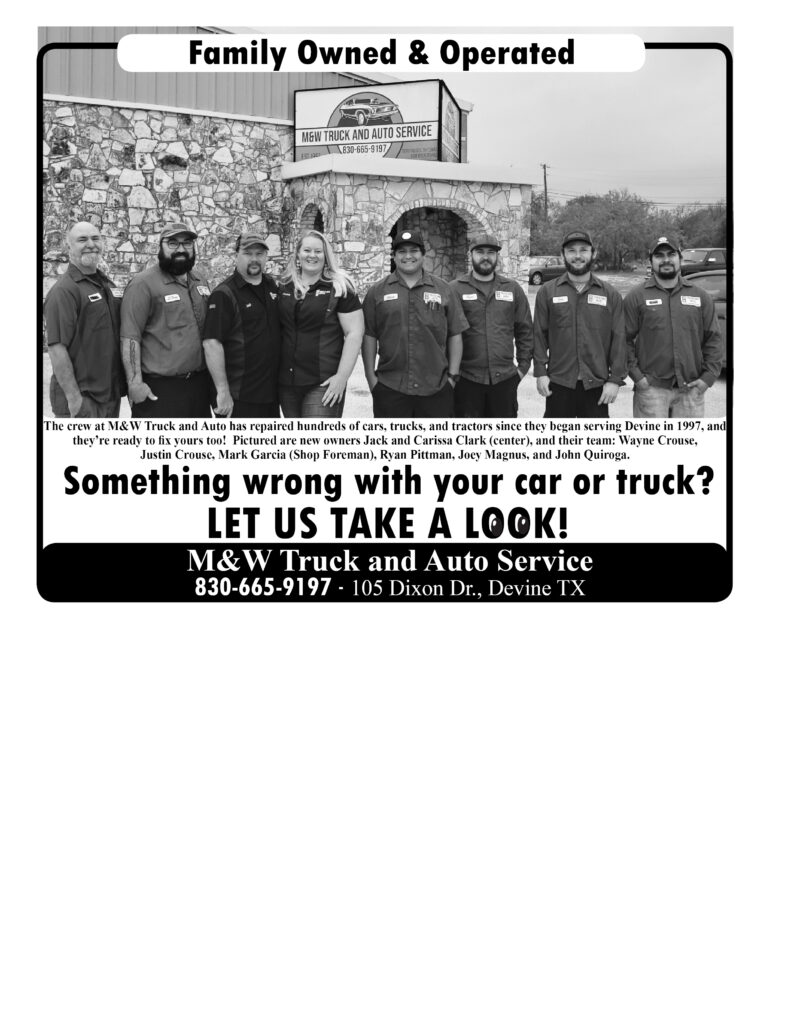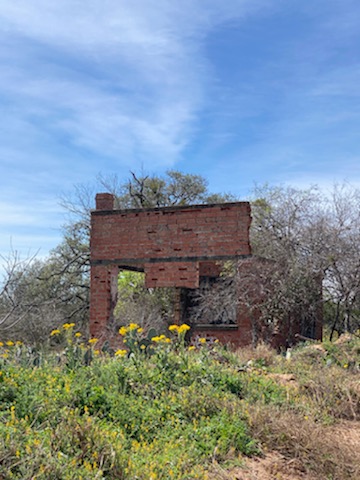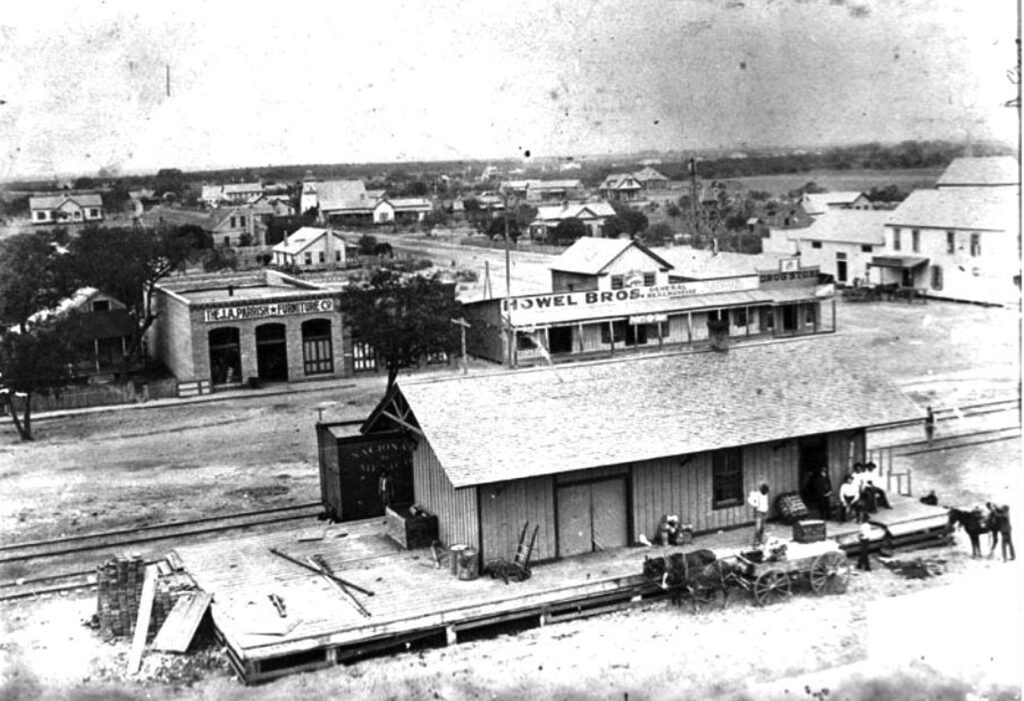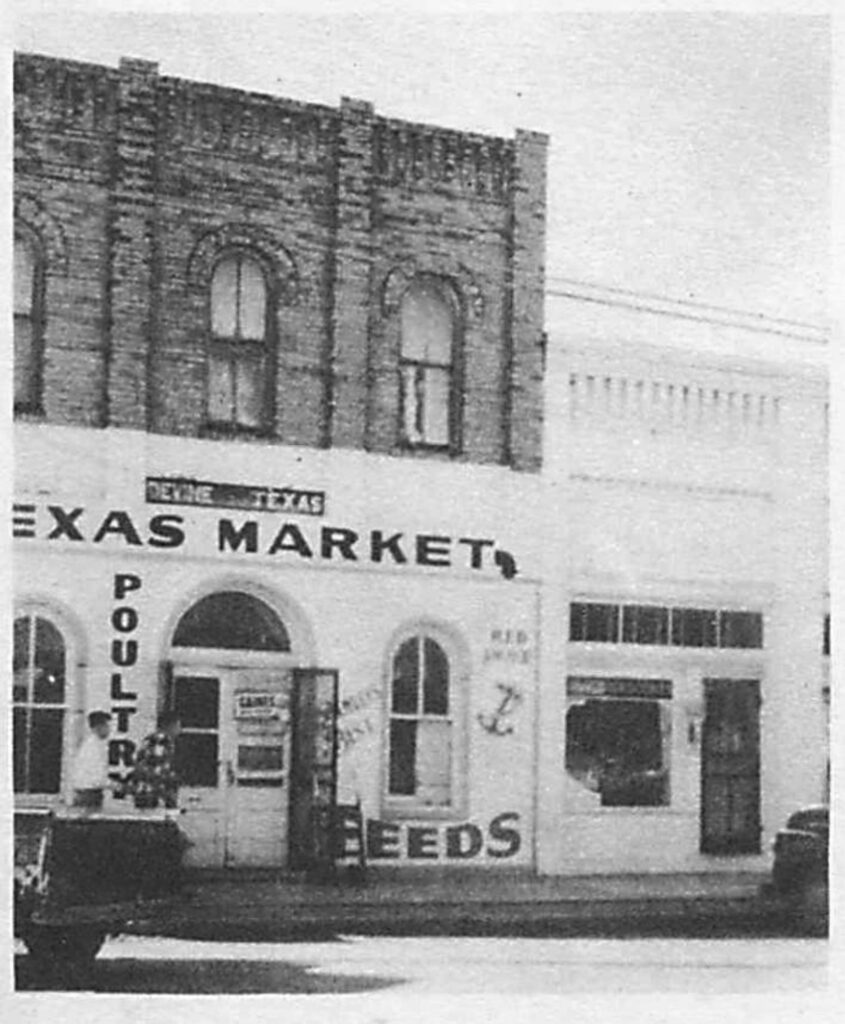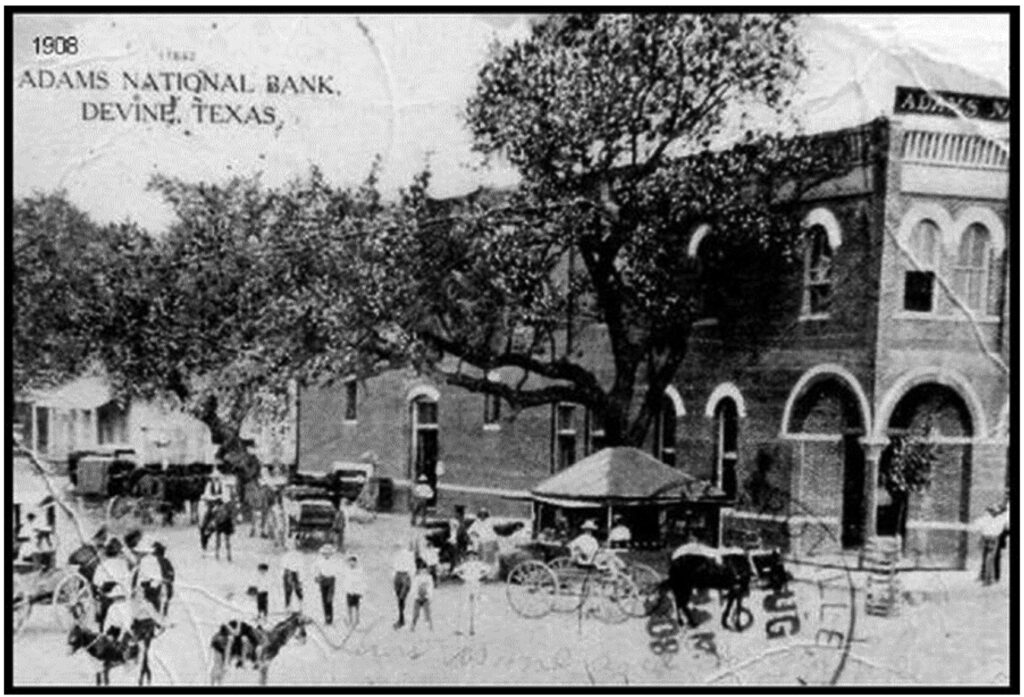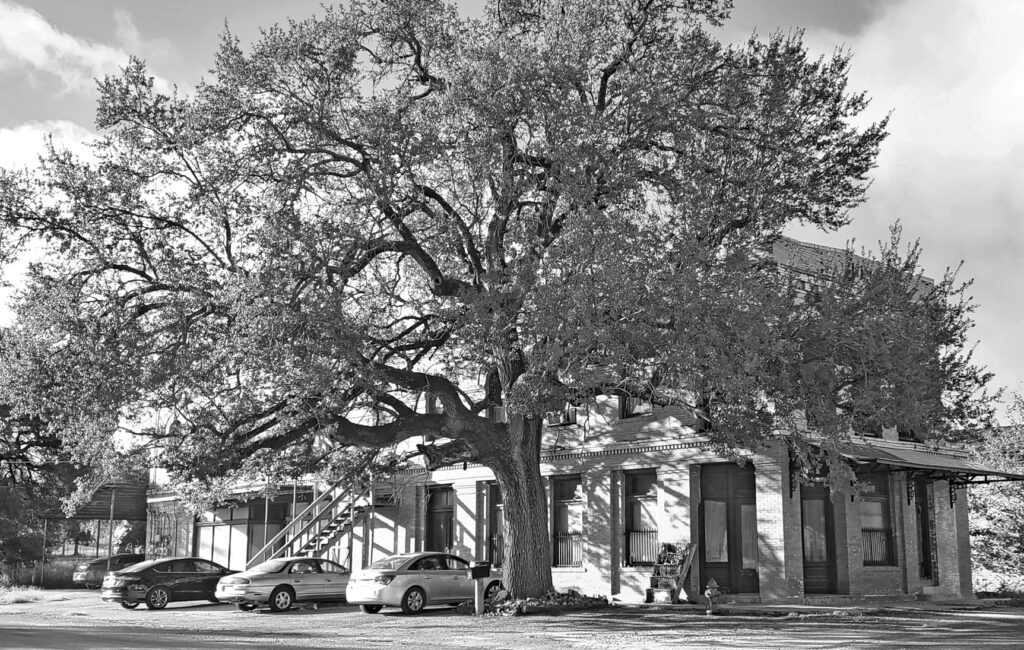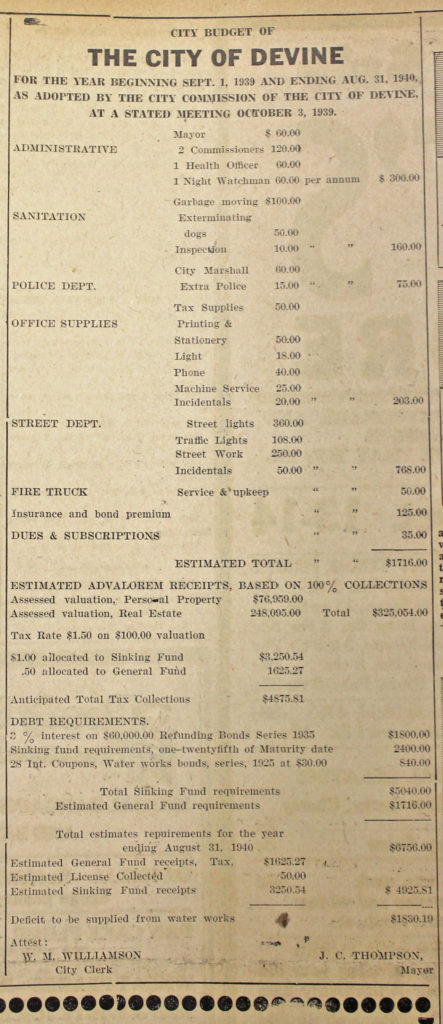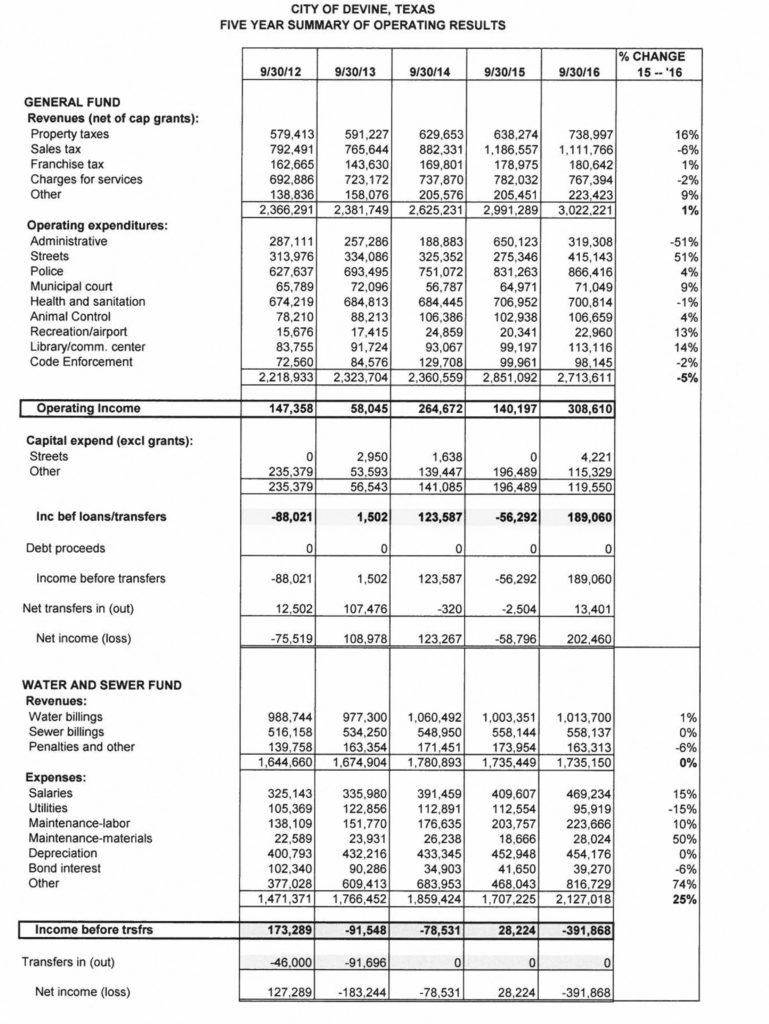“A Picture Only Tells Part of the Story!”
By Nancy Ehlinger Saathoff of the DEVINE HISTORICAL COMMITTEE
Devine, Texas was only thirty years old when this picture was taken, and this was a time prior to regular electric lighting, refrigeration, indoor plumbing, and most people still used trains, horses and buggies as their main mode of transportation in this area. But a picture only tells part of the story.
In 1911 Devine was actually a bustling incorporated town of 2000 people with a thriving community, surrounded by small farms and ranches. There were sixteen brick and stone mercantile buildings, some “mammoth in size”, such as the large Adams Company building (currently American Momentum Bank), These buildings housed a variety of businesses to serve the citizens of Devine – an opera house, bakeries, a bank, two millinery (hat) shops, drug stores with doctor and dentist offices, meat storage (butcher shop), furniture store, grocery stores, a jewelry store, tailor shops, lawyer offices, barbershops, and more. Multiple mercantile stores, such as Loggins & Lilly, Ehlinger & Sons, SJ Howell & Sons, the Cash Store, the Adams Company, and others carried a variety of items ranging from food, dried goods, clothing, household items, horse tack, wagons supplies, to even coffins! Often these businesses shared these buildings with one upstairs and one downstairs. With multiple similar businesses there was plenty of competition to keep prices reasonable.

Devine had plans in 1911 for an “ice plant and light plant, a bakery, a creamery, mattress factory, a broom factory, and all the ordinary business establishments found in a progressive town of our size, except the saloon, which died for want of patronage twenty year ago.” That last part tells you a bit more about the people of Devine at that time too!
The two-story brick schoolhouse had “thirteen rooms, seated with modern desks, and equipped with manual training apparatus and laboratory with eight teachers in the main building.” St. Joseph’s Catholic School had a “four room school with two teachers and the colored school has one teacher” for the few in attendance.
The “Baptist, Methodist, Christian, and Catholic churches compared in strength about as given, except that the Catholics have a larger country consistency.” “Our people pride themselves on their churches and schools…”
Being only 35 miles, by train, from San Antonio also had its advantages. There was an expanded depot (in the picture) for the passengers who came to Devine to shop, visit friends, and even go to a show at the Briscoe Opera House and take in a meal at one of several local cafes. The trains also brought building supplies for the dwellings that were being built, supplies for all the businesses, and it was especially important for transporting farming supplies and sending out crops to markets in San Antonio and other places.
At this time in Devine’s history there must have been regular rains because the land is described as having “an average rainfall of 30 inches, with fertile lands”. It is also described as having “a fine climate and a fine citizenship of people who work half the time to make a good living.” “The soil varies from a deep white sand to a gumbo black and is suitable for the growing of cotton, corn, milo maize, sorghum, melons, onions, potatoes, and fruits, figs and grapes.” “There is plenty of timber for wood and fence posts and water in inexhaustible supplies from 40 to 100 feet.” Residences, businesses, and farms alike depended on drilling wells and many used windmills, which you would see even dotted around town. “Lands sell from $10 to $40 and acre out of town and these can be bought generally on easy terms.”
This snapshot of 1911 Devine tells of days of enthusiasm by the town leaders and citizens to build a prosperous community to raise their families. It took a lot of “Go-Getters” to make all this happen in thirty years and we can understand why, to them who came from older states and countries for a new chance at a better life, Devine was truly “divine”!
*If you have any stories or pictures about Devine that you would like to share, you may contact Nancy Saathoff at gnsaathoff@aol.com or 210-289-6205. Or you can share them on the Facebook page for the Devine Historical Committee.
